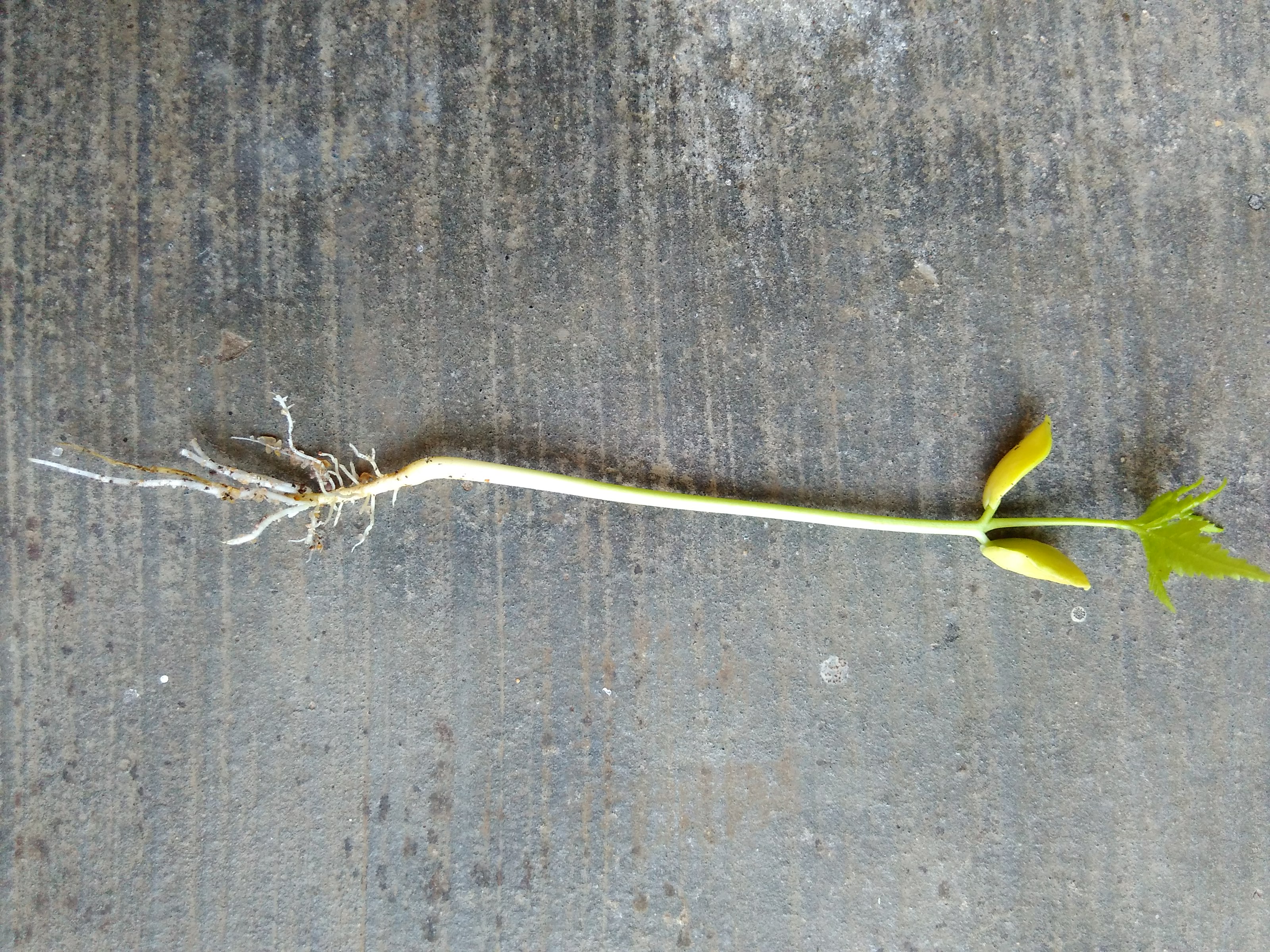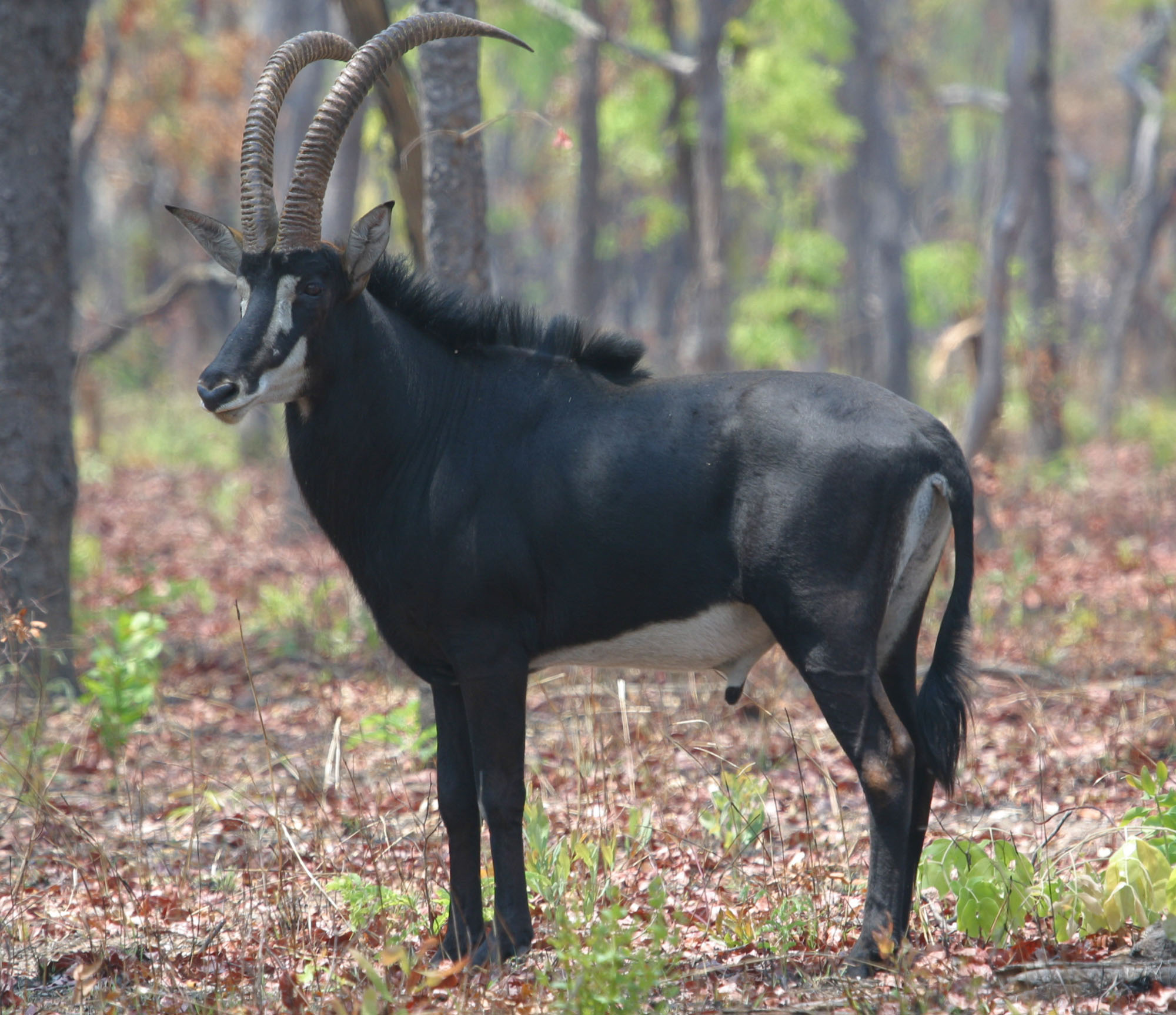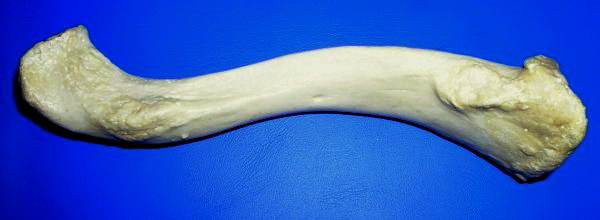|
Patagonian Mara
The Patagonian mara (''Dolichotis patagonum'') is a relatively large rodent in the mara genus ''Dolichotis''. It is also known as the Patagonian cavy or Patagonian hare. This herbivorous, somewhat rabbit-like animal is found in open and semiopen habitats in Argentina, including large parts of Patagonia. It is monogamous, but often breeds in warrens shared by several pairs. Description The Patagonian mara resembles a jackrabbit. It has distinctive upright ears and long limbs. Its hind limbs are longer and more muscular than its fore limbs and it has a longer radius than humerus.Campos. C. M., Tognelli. M. F., Ojeda. R. A., (2001) Dolichotis patagonu, ''Mammalian Species'', 625:1-5 The feet are compressed, making them hoof-like, which contributes to Patagonian maras resembling small ungulates, especially when standing or walking. The fore feet have four digits while the hind feet have three digits. Its tail is short, depressed, and hairless. It has a gray dorsal pelage with a white ... [...More Info...] [...Related Items...] OR: [Wikipedia] [Google] [Baidu] |
Pleistocene
The Pleistocene ( ; referred to colloquially as the ''ice age, Ice Age'') is the geological epoch (geology), epoch that lasted from to 11,700 years ago, spanning the Earth's most recent period of repeated glaciations. Before a change was finally confirmed in 2009 by the International Union of Geological Sciences, the cutoff of the Pleistocene and the preceding Pliocene was regarded as being 1.806 million years Before Present (BP). Publications from earlier years may use either definition of the period. The end of the Pleistocene corresponds with the end of the last glacial period and also with the end of the Paleolithic age used in archaeology. The name is a combination of Ancient Greek () 'most' and (; Latinized as ) 'new'. The aridification and cooling trends of the preceding Neogene were continued in the Pleistocene. The climate was strongly variable depending on the glacial cycle, oscillating between cold Glacial period, glacial periods and warmer Interglacial, int ... [...More Info...] [...Related Items...] OR: [Wikipedia] [Google] [Baidu] |
Capybara
The capybara or greater capybara (''Hydrochoerus hydrochaeris'') is the largest living rodent, native to South America. It is a member of the genus '' Hydrochoerus''. The only other extant member is the lesser capybara (''Hydrochoerus isthmius''). Its close relatives include guinea pigs and rock cavies, and it is more distantly related to the agouti, the chinchilla, and the nutria. The capybara inhabits savannas and dense forests, and lives near bodies of water. It is a highly social species and can be found in groups as large as one hundred individuals, but usually live in groups of 10–20 individuals. The capybara is hunted for its meat and hide and also for grease from its thick fatty skin. Etymology Its common name is derived from Tupi , a complex agglutination of (leaf) + (slender) + (eat) + (a suffix for agent nouns), meaning "one who eats slender leaves", or "grass-eater". The genus name, ''hydrochoerus'', comes from Greek (' "water") and (' "pig, hog") an ... [...More Info...] [...Related Items...] OR: [Wikipedia] [Google] [Baidu] |
Chloris (plant)
''Chloris'' is a widespread genus of monophyletic grasses belonging to the family Poaceae, known generally as windmill grass or finger grass. The genus is found worldwide, but especially in the tropical and subtropical regions, and more often in the Southern Hemisphere. The species are variable in morphology, but in general, the plants are less than 0.5 m in height. They bear inflorescences shaped like umbels, with several plumes lined with rows of spikelets. The genus is characterized by the series of sterile florets above the lowest fertile ones, spikes usually 4–10 in numbers (occasionally 1–2), approximated or in a slightly separated series of 10–20 spikes, rarely an indefinite numbers of terminal spikes (then usually up to 50 or rarely more, as seen in ''Chloris roxburghiana'' Schultes). In India, 11 species are known to occur in which only two are endemic viz. ''Chloris wightiana'' Nees ex Steud. and ''Chloris bournei'' Rangachariar & Tadulingam. The genus was named ... [...More Info...] [...Related Items...] OR: [Wikipedia] [Google] [Baidu] |
Dicotyledon
The dicotyledons, also known as dicots (or, more rarely, dicotyls), are one of the two groups into which all the flowering plants (angiosperms) were formerly divided. The name refers to one of the typical characteristics of the group: namely, that the seed has two embryonic leaves or cotyledons. There are around 200,000 species within this group. The other group of flowering plants were called monocotyledons (or monocots), typically each having one cotyledon. Historically, these two groups formed the two divisions of the flowering plants. Largely from the 1990s onwards, molecular phylogenetic research confirmed what had already been suspected: that dicotyledons are not a group made up of all the descendants of a common ancestor (i.e., they are not a monophyletic group). Rather, a number of lineages, such as the magnoliids and groups now collectively known as the basal angiosperms, diverged earlier than the monocots did; in other words, monocots evolved from within the ... [...More Info...] [...Related Items...] OR: [Wikipedia] [Google] [Baidu] |
Monocotyledon
Monocotyledons (), commonly referred to as monocots, ( Lilianae '' sensu'' Chase & Reveal) are flowering plants whose seeds contain only one embryonic leaf, or cotyledon. A monocot taxon has been in use for several decades, but with various ranks and under several different names. The APG IV system recognises its monophyly but does not assign it to a taxonomic rank, and instead uses the term "monocots" to refer to the group. Monocotyledons are contrasted with the dicotyledons, which have two cotyledons. Unlike the monocots however, the dicots are not monophyletic and the two cotyledons are instead the ancestral characteristic of all flowering plants. Botanists now classify dicots into the eudicots ("true dicots") and several basal lineages from which the monocots emerged. The monocots are extremely important economically, culturally, and ecologically, and make up a majority of plant biomass used in agriculture. Common crops such as dates, onions, garlic, rice, wheat, maize, ... [...More Info...] [...Related Items...] OR: [Wikipedia] [Google] [Baidu] |
Antelope
The term antelope refers to numerous extant or recently extinct species of the ruminant artiodactyl family Bovidae that are indigenous to most of Africa, India, the Middle East, Central Asia, and a small area of Eastern Europe. Antelopes do not form a monophyletic group, as some antelopes are more closely related to other bovid groups, such as bovines, goats, and sheep, than to other antelopes. A stricter grouping, known as the true antelopes, includes only the genera '' Gazella'', '' Nanger'', '' Eudorcas'', and '' Antilope''. One North American mammal, the pronghorn or "pronghorn antelope", is colloquially referred to as the "American antelope", despite the fact that it belongs to a completely different family ( Antilocapridae) than the true Old-World antelopes; pronghorn are the sole extant member of an extinct prehistoric lineage that once included many unique species. Although antelope are sometimes referred to, and easily misidentified as, "deer" ( cervids), true ... [...More Info...] [...Related Items...] OR: [Wikipedia] [Google] [Baidu] |
Clavicle
The clavicle, collarbone, or keybone is a slender, S-shaped long bone approximately long that serves as a strut between the scapula, shoulder blade and the sternum (breastbone). There are two clavicles, one on each side of the body. The clavicle is the only long bone in the body that lies horizontally. Together with the shoulder blade, it makes up the shoulder girdle. It is a palpable bone and, in people who have less fat in this region, the location of the bone is clearly visible. It receives its name from Latin ''clavicula'' 'little key' because the bone rotates along its axis like a key when the shoulder is Abduction (kinesiology), abducted. The clavicle is the most commonly fractured bone. It can easily be fractured by impacts to the shoulder from the force of falling on outstretched arms or by a direct hit. Structure The collarbone is a thin doubly curved long bone that connects the human arm, arm to the torso, trunk of the body. Located directly above the first rib, it ac ... [...More Info...] [...Related Items...] OR: [Wikipedia] [Google] [Baidu] |
Valdes Peninsula
Valdez or Valdés may refer to: People *Valdez (surname) *Valdés (surname) * Valdez (Brazilian footballer) (born 1943), a Brazilian former footballer * Valdez Demings, U.S. politician Geography * Valdés, Asturias, Spain *Valdez, Alaska Valdez ( ; Alutiiq language, Alutiiq: ) is a city in the Chugach Census Area, Alaska, Chugach Census Area in the U.S. state of Alaska. In 2020, the population of Valdez was 3,985, up slightly from 3,976 in 2010. It is the List of cities in Alask ..., United States ** Valdez oil terminal * Valdez, Esmeraldas, Ecuador * Valdez, Florida, United States * Valdes Island, Canada * Valdés Peninsula, Argentina Other uses *Valdez, an acrobatic gymnastics variation of the back walkover *'' Exxon Valdez'', an oil tanker that ran aground and caused an oil spill in Alaska in 1989 ** Valdez Blockade, a protest by Alaskan fishermen in 1993 {{disambig, geo ... [...More Info...] [...Related Items...] OR: [Wikipedia] [Google] [Baidu] |
Larrea
''Larrea'' is a genus of flowering plants in the caltrop family, Zygophyllaceae. It contains five species of evergreen shrubs that are native to the Americas. The generic name honours Bishop Juan Antonio Hernández Pérez de Larrea, a patron of science."Larrea" is itself a Basque surname, where ''larrea'' stands for a village in Álava (Spain), ultimatelmeaning 'meadow'(plus article -a). South American members of this genus are known as ''jarillas'' and can produce fertile interspecific hybrids. One of the more notable species is the creosote bush ('' L. tridentata'') of the southwestern United States and northwestern Mexico. The King Clone ring in the Mojave Desert is a creosote bush clonal colony estimated to be about 11,700 years old. Species Five species are accepted. *'' Larrea ameghinoi'' *'' Larrea cuneifolia'' *'' Larrea divaricata'' Cav. *''Larrea nitida'' *''Larrea tridentata ''Larrea tridentata'', called creosote bush, greasewood, and chaparral is a medicina ... [...More Info...] [...Related Items...] OR: [Wikipedia] [Google] [Baidu] |
Creosote
Creosote is a category of carbonaceous chemicals formed by the distillation of various tars and pyrolysis of plant-derived material, such as wood, or fossil fuel. They are typically used as preservatives or antiseptics. Some creosote types were used historically as a treatment for components of seagoing and outdoor wood structures to prevent rot (e.g., bridgework and railroad ties, see image). Samples may be found commonly inside chimney flues, where the coal or wood burns under variable conditions, producing soot and tarry smoke. Creosotes are the principal chemicals responsible for the stability, scent, and flavor characteristic of smoked meat; the name is derived . The two main kinds recognized in industry are coal-tar creosote and wood-tar creosote. The coal-tar variety, having stronger and more toxic properties, has chiefly been used as a preservative for wood; coal-tar creosote was also formerly used as an escharotic, to burn malignant skin tissue, and in dentistry ... [...More Info...] [...Related Items...] OR: [Wikipedia] [Google] [Baidu] |
Monte Desert
The Monte Desert is a South American desert, lying entirely within Argentina and covering approximately the submontane areas of Catamarca, La Rioja, San Juan, San Luis and Mendoza Provinces, plus the western half of La Pampa Province and the extreme north of Río Negro Province. The desert lies southeast of the Atacama Desert in Chile and Peru, north of the larger Patagonian Desert, east of the Andes and west of the Sierra de Córdoba. Geography and climate The delineations between the Monte Desert, the Atacama Desert, and the Patagonian Desert are not exact and the desert seems to be more-or-less continuous with the other two nearby deserts. The geography of the land is very similar to that of the interior Patagonian Desert, with volcanic sediments, piedmont plains, large mountain blocks and many usually dry salt lakes. The major river is the Río Colorado and its tributary the Río Desaguadero, which meet in the south of the region and provide its principal source of irriga ... [...More Info...] [...Related Items...] OR: [Wikipedia] [Google] [Baidu] |
50th Parallel South
Following are circles of latitude between the 45th parallel south and the 50th parallel south: 46th parallel south The 46th parallel south is a circle of latitude that is 46 degrees south of the Earth's equatorial plane. It crosses the Atlantic Ocean, the Indian Ocean, Australasia, the Pacific Ocean and South America. At this latitude the sun is visible for 15 hours, 45 minutes during the December solstice and 8 hours, 38 minutes during the June solstice. This holds true regardless of longitude. The largest city south of the 46th parallel is Punta Arenas. Around the world Starting at the Prime Meridian and heading eastwards, the parallel 46° south passes through: : 47th parallel south The 47th parallel south is a circle of latitude that is 47 degrees south of the Earth's equatorial plane. It crosses the Atlantic Ocean, the Indian Ocean, Australasia, the Pacific Ocean and South America. At this latitude, the sun is visible for 15 hours and 54 minutes during the Dece ... [...More Info...] [...Related Items...] OR: [Wikipedia] [Google] [Baidu] |







